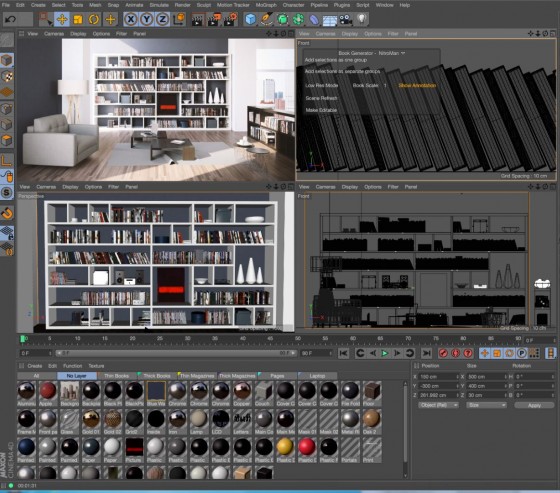Lens distortion and support for Houdini also included in this update.
A new system for working with multiple takes of a scene highlights the Release 17 of Maxon Cinema 4D, which will preview next week at Siggraph before shipping in September.
Maxon says the new Take System “provides complete and flexible scene handling to manage render layers and animation variations.” Other highlights of this release include new lens distortion tools, a reworked set of spline tools, and a variety of new sculpting and animation features.
Take System: Delivers new functionality beyond a Render Layer System by providing flexible scene management. Artists can create numerous independent takes of a scene and change almost any parameter for intuitive variations – all saved in a single scene file, eliminating file management hassles. Maxon says the ability to maintain complete versioning and variation control also saves users valuable production time.

Graph View for Motion Tracker: R17 has a new Graph View that highlights problem track points in a simple-to-use graph and lets users remove them from the calculation for improved efficiency.
Lens Distortion Support: Generate a distortion profile for any image, such as for curved and plunging lines, when integrating 3D elements into videos or photos. The interface also improves functionality to remove distortion for tracking and scene creation or to re-apply distortion at render time. There is also an option to save lens settings for future use.

New Spline Tools: The reworked Spline Tools in R17 provide artists with added control for manipulating points, lines, tangents and arcs more intuitively. Users can leverage Boolean operators like Intersect, Subtract, Union, And, and Or for faster workflow.
Animation Workflow Enhancements: Control F-Curves with weighted tangents with the option of automatically removing overshoot. Eliminate Gimbal lock with Euler filtering, define animation regions using range markers, and master animation workflow with new Timeline preferences.
Sculpting Improvements: The Sculpt to Pose Morph feature automatically creates morph targets for each sculpt layer, which lets artists transition from character design to character animation. The new Edge Detection feature is designed to let users sculpt hard-surface models.

Houdini Engine Integration: Integration with Side Effect Software’s Houdini Engine lets users load Houdini Digital Assets (HDA) such as parametric objects, simulations, etc., into Cinema 4D and manipulate them like standard Cinema 4D generators. The Houdini Engine processes the HDA in the background with low overhead and returns it to Cinema 4D.
SketchUp Integration: Tighter integration in R17 with Trimble SketchUp – popular with game and film designers as well as in architecture and interior design – allows quick population of scenes.





